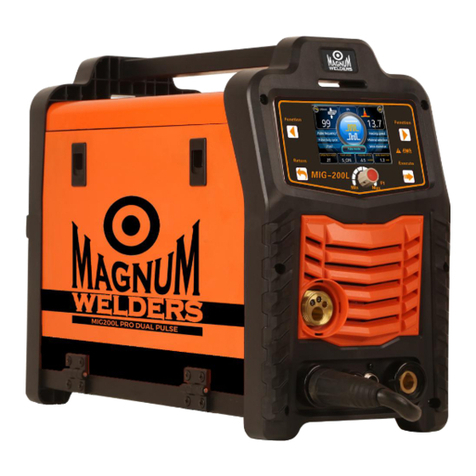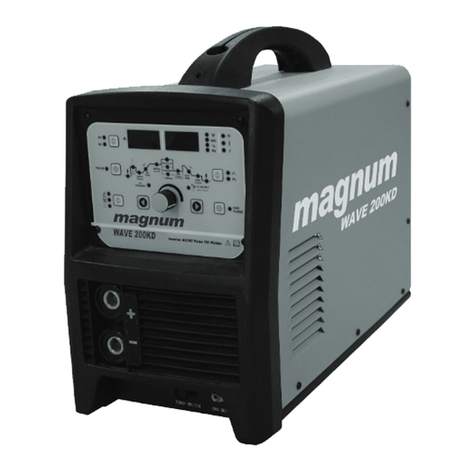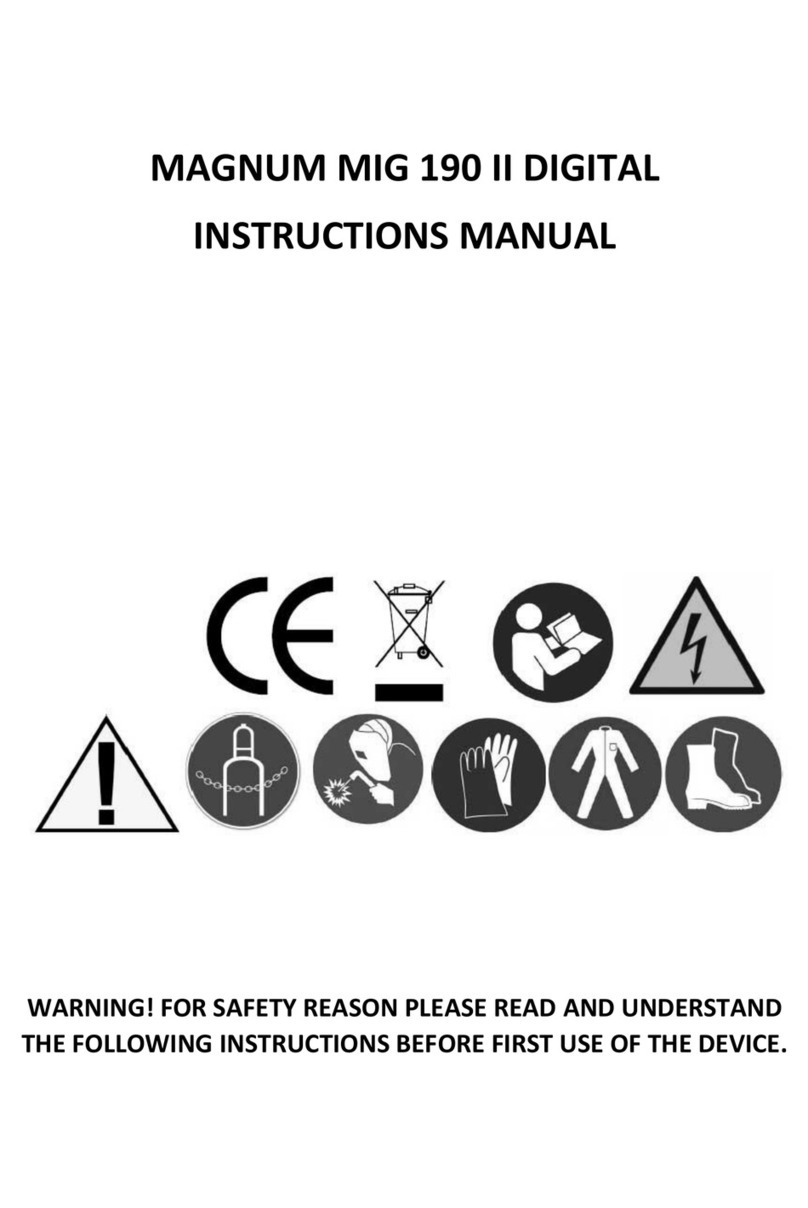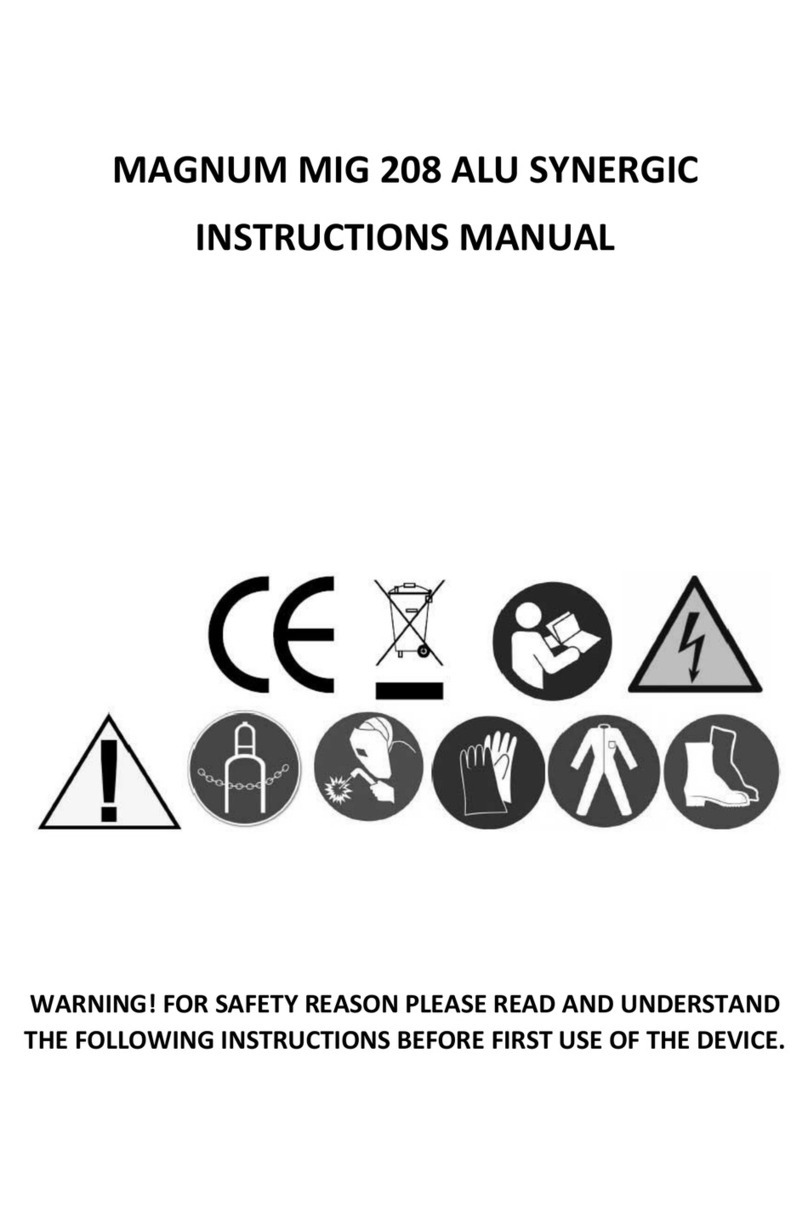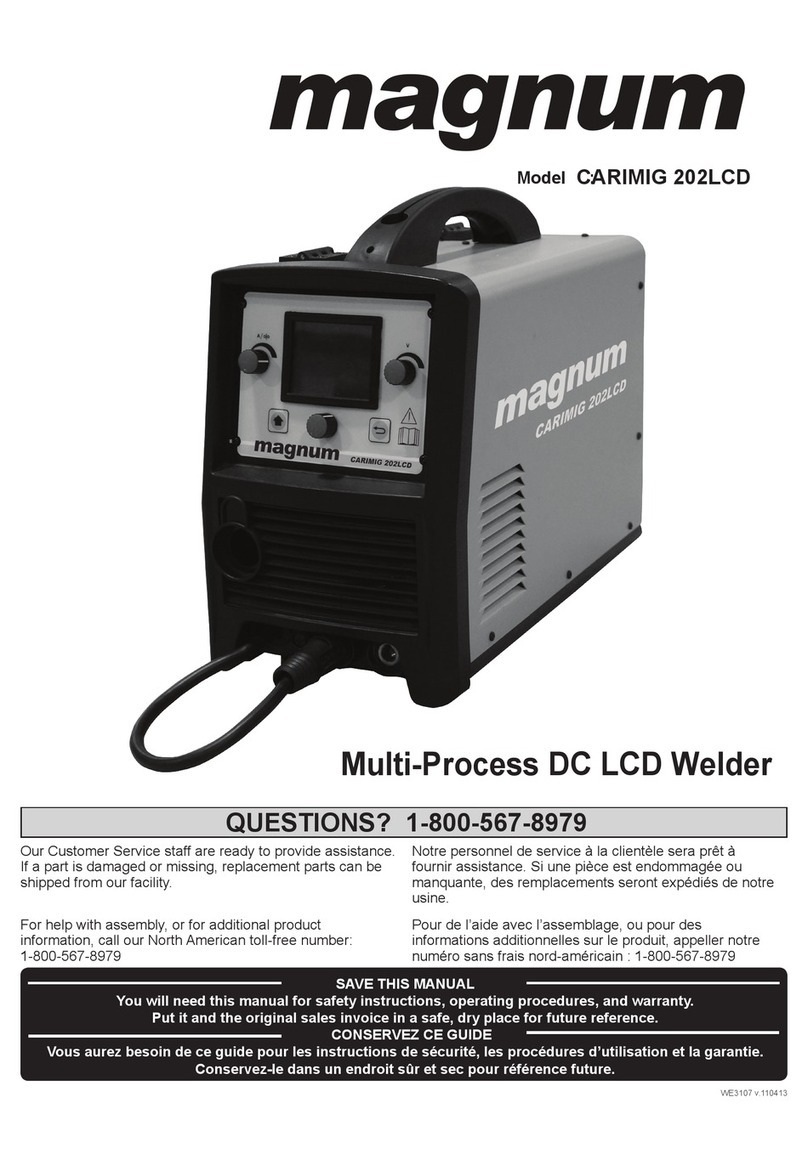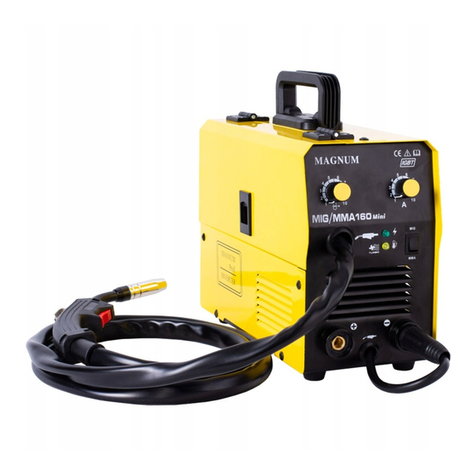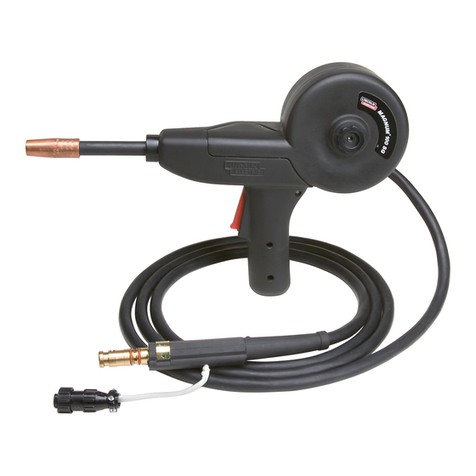
OHS MANUAL
in electric welding
3.1. General thoughts.
a) You should commence work rested, sober, wearing work clothes made of
flame-retardant fabric or leather, cover your hair with a beret or a cap, wear
shoes with flame-retardant trousers, welding gloves and personal protection, a
leather apron, welding mask, protective glasses, individual respiratory protection
equipment.
b) Work related to the installation, disassembly, repair and inspection of electric welding
devices should be performed by employees with appropriate qualifications.
c) The connection of several welding energy sources should not result in exceeding, in the no-
load condition, the permissible voltage between the output circuits of the connected energy
sources.
d) The welding current circuit should not be earthed, except when the items to
be welded are connected to earth.
e) Welding cables connecting the workpiece with the energy source should be
connected directly to the workpiece or tooling, as close to the welding site as
possible.
3.2. Basic activities before starting work.
The welder should:
a) read the executive documentation and the scope of welding works,
b) plan the sequence of performing individual welds,
c) prepare an appropriate binder,
d) prepare adequate face and eye protection,
e) check the condition of the connections of the welding installation and the working handle,
f) check that the welding process does not pose a threat to the environment (arc radiation,
possibility of ignition of easily ignitable elements),
g) check if there is no ignition on the other side when welding on the wall,
3.3. Activities during welding.
a) Secure the workplace, unless there are fixed, movable anti-
glare and anti-spatter screens.
b) For welding electric wires and a work handle, use only those in good technical
condition (undamaged insulation).
c) Only use the correct thickness of electrodes and wires for welding.
d) Fasten and set up the welded object reliably and solidly and so that it will not be
damaged.
e) Position the workpieces to be welded in such a way as to prevent their shifting or
tipping over. Use needle hammers and protective glasses when deflecting slag.
f) When welding inside boilers, tanks or in confined spaces, regardless of the
ventilation used, use respiratory protection.
g) When working inside tanks, boilers and other metal rooms, use 24V
electric lighting.
h) Make sure that the welded element does not cause a risk of falling or moving away dangerous for the
welder.
6
